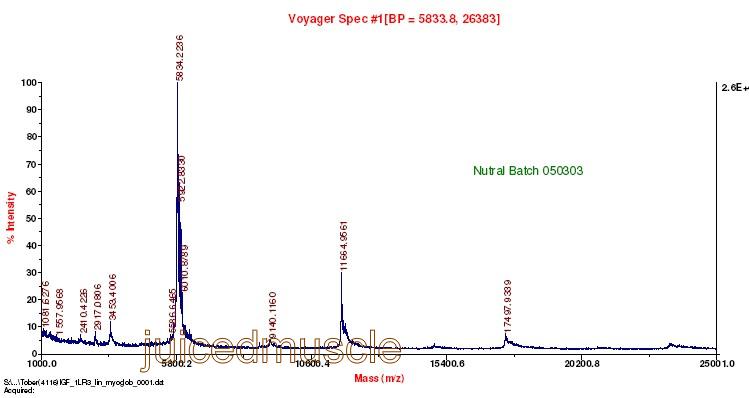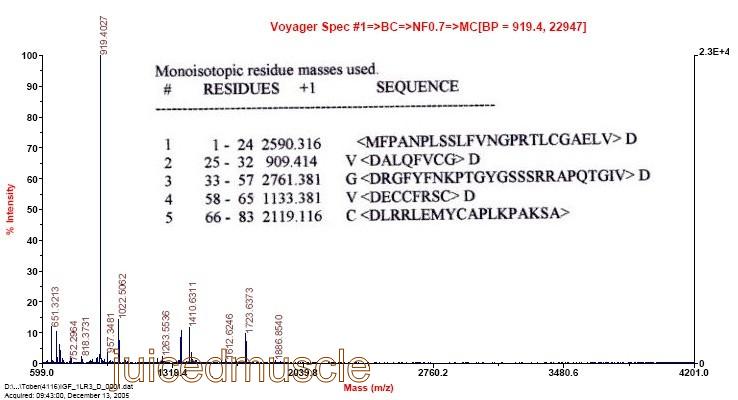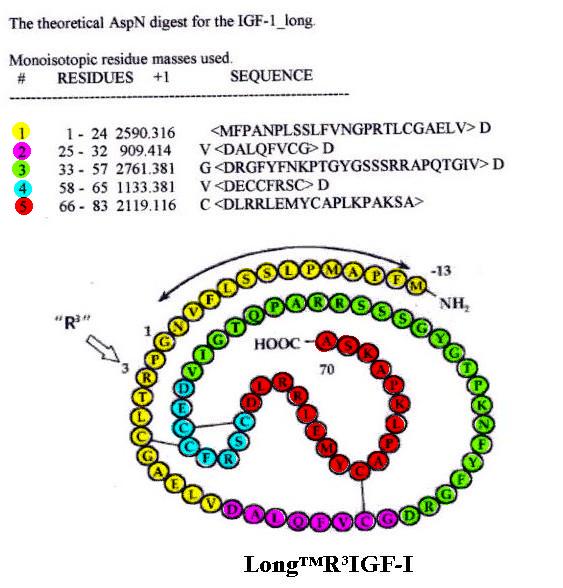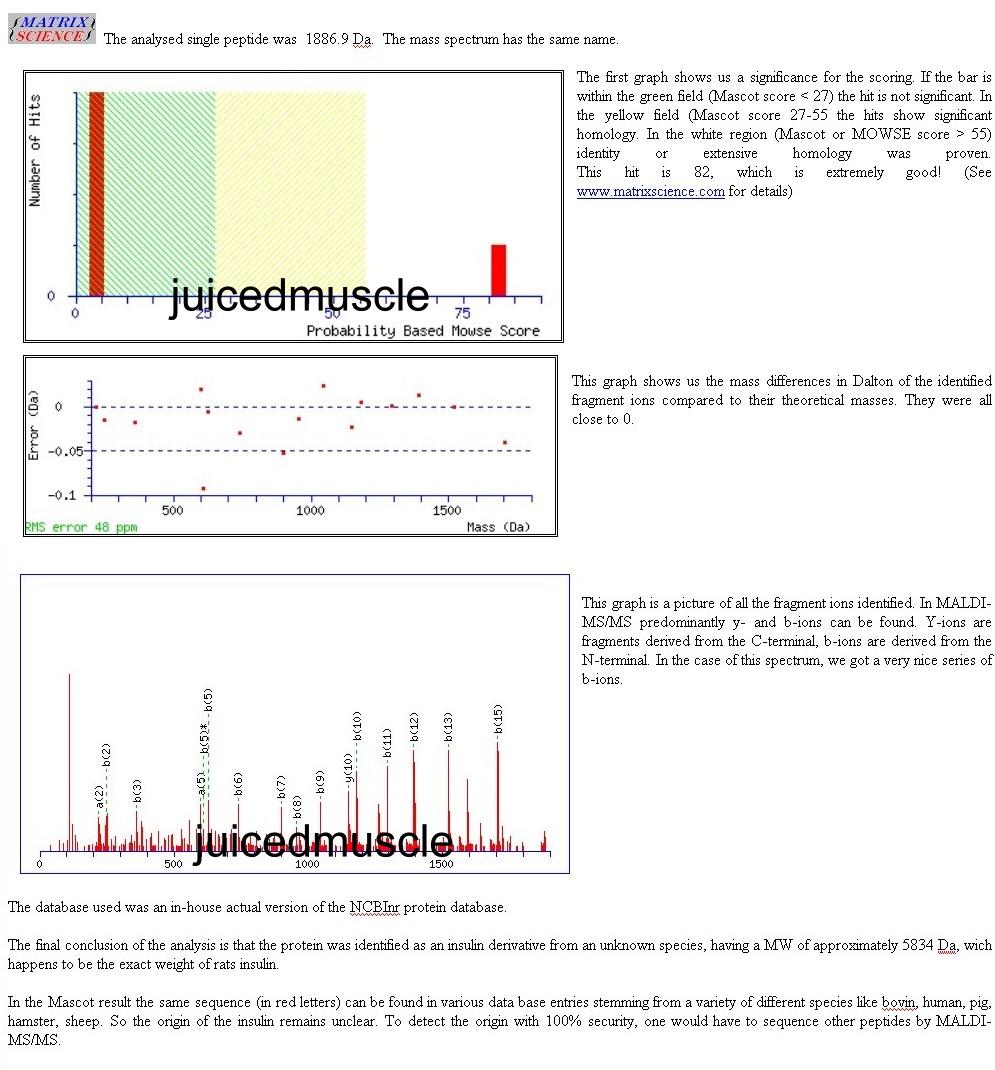IGF-1 LR3 analysis.
 One of my friends, a huge guy who competes in the strongest man competition, had bought some IGF-1 vials. The brand name was Nutral with lot number 050303. According to the label it contained 1000 mcg IGF-1 LR3 in acetic acid. He lifted his shirt and showed me his body. He had blue coloured bruises alike spots on his body the size of a hand, with fluid retention underneath. Later he confessed that they had lasted for weeks. I became very curious and tried to find a laboratory that had the capability to analyse complex proteins. I found one in Germany.
One of my friends, a huge guy who competes in the strongest man competition, had bought some IGF-1 vials. The brand name was Nutral with lot number 050303. According to the label it contained 1000 mcg IGF-1 LR3 in acetic acid. He lifted his shirt and showed me his body. He had blue coloured bruises alike spots on his body the size of a hand, with fluid retention underneath. Later he confessed that they had lasted for weeks. I became very curious and tried to find a laboratory that had the capability to analyse complex proteins. I found one in Germany.
 Of course our main fear was a compound that was polluted or contaminated, thus we made a SDS-PAGE first. Except for one weak band (wich might be a dimer) the analysis showed no contamination.
Of course our main fear was a compound that was polluted or contaminated, thus we made a SDS-PAGE first. Except for one weak band (wich might be a dimer) the analysis showed no contamination.
The second analysis was a MALDI-TOF-MS spectrum in linear mode from 1000-25000 Dalton (Da). The main peak showed at 5800 Da. A dimer peak was detected at 11665Da. This one was not further examined. In the zoom of the main band, wich was analysed by MALDI-MS peptide mass fingerprinting, the molecular mass was found to be 5834 Da.

The zoom spectrum also showed a lot of iso forms from the peptide. By example at +22 (5856 Da), +44 (5878 Da), +66 (5900). This might be due to a polymer. But most important was the molecular mass, or molecular weight was detected to be 5834 Dalton. This is way to small, because IGF-1(a chain of 70 amino acids) weighs 7649 Da, and the modified analogue of IGF-1, IGF-1 LongR3 (83aa) weighs 9111 Da. It was clear that this examined vial contained something else than the labelled content, IGF-1 LR3. Now it was time to find out what it really contained. There was a small possibility that the protein could have decomposed due to wrong transport or storage. Despite the fact that the label mentions that the content stays stable for two years at roomtemperature.

Dr. Thomas M. Halder made a theoretical AspN of IGF-1 LR3 and made an other peptide mass fingerprinting in the range of the expected masses between 600 - 4200 Da. None where observed, wich strengthened our suspicion that this vial contained something else then the labelled modified insulin like growth factor. The lab did a database query without getting a significant result.
 Al these tests already had cost a lot of money and stil we didn’t know the actual content. There where a few possibilities left to identify the protein, one was an MALDI-MS/MS on some of the proteins to sequence them, and another possibility was N-terminal sequencing.
Al these tests already had cost a lot of money and stil we didn’t know the actual content. There where a few possibilities left to identify the protein, one was an MALDI-MS/MS on some of the proteins to sequence them, and another possibility was N-terminal sequencing.
The lab did an MS/MS on one of the proteins and was lucky to find the sequence from rat insulin!!

..December2005…ronny.. ©of graphics and text JuicedMuscle.
Special thanks to Thomas M. Halder from Germany who did the analysing.
- Login to post comments


